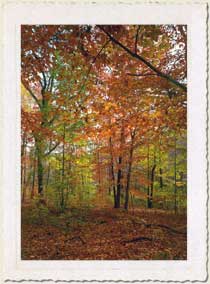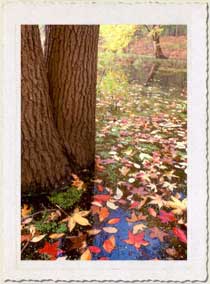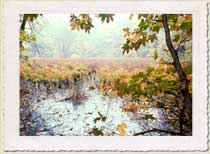
Alley Pond Park Preserve
Borough: Queens
Acres: 549
Habitat Type: Forest, Salt Marsh, Freshwater Wetland
Map: PDF
Alley Pond Park is the second largest park in Queens at 635 acres. The site is named for The Alley, an 18th century commercial and manufacturing center formerly located here. The park lies on a glacier-formed moraine, a ridge of sand and rock that formed 15,000 years ago, marking the southern terminus of the Minnesota Ice Sheet. The glacier dropped the boulders that sit on the hillsides of the southern end of the park and left buried chunks of ice that melted and formed the ponds dispersed throughout the valley, called “Kettle Ponds.” Fresh water drains into the valley from the hills and bubbles up from natural springs, mixing with the salt water from Little Neck Bay. As a result, the park is host to freshwater and saltwater wetlands, tidal flats, meadows, and forests, creating a diverse ecosystem and supporting abundant bird life.
The tulip trees, oaks, and beeches in Alley Pond Park’s forest are some of the largest in the City, including the largest tulip tree on Long Island. Locally- and state-rare plants include bloodroot, Christmas fern, pink lady’s slipper, ginat yellow hyssop, and others. The kettle ponds and other small wooded wetlands support the City’s best remaining populations of spotted and two-lined salamanders, wood frog, spring peeper, and gray tree frog.
In 1998, ospreys nested in the park for the first time since the 1920s, on a platform erected in the Little Neck Bay salt marsh. Ospreys may also be seen diving for fish in the lake at Van Cortlandt Park and in Pelham Bay Park in the Bronx.
Photographs
Directions
By Subway: 7 train to Main Street, Flushing, then Q12 bus to Northern Blvd. E, F train to Union Turnpike/Kew Gardens, then Q44A bus.
By Bus: Q12, Q30, Q46 bus to Alley Pond Environmental Center (APEC) stop.
By Car: Cross Island Parkway to Northern Boulevard East. Park at APEC on right OR Grand Central Parkway to Alley Park/Winchester Blvd exit.


